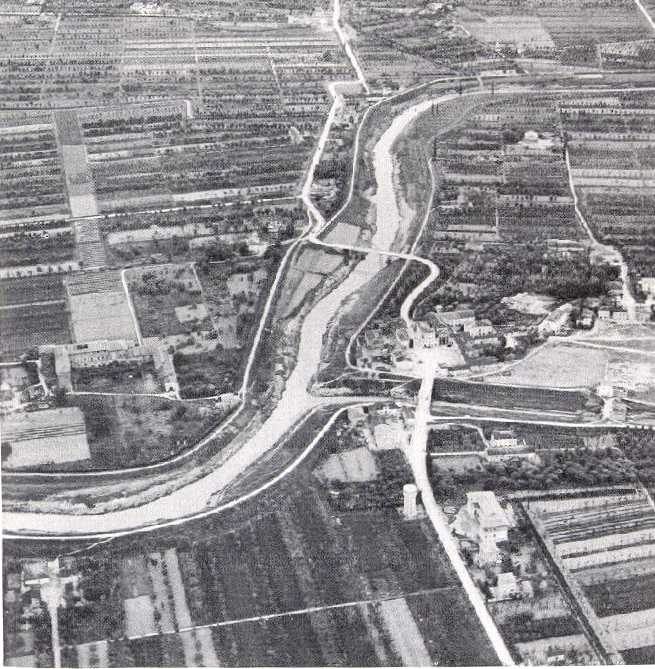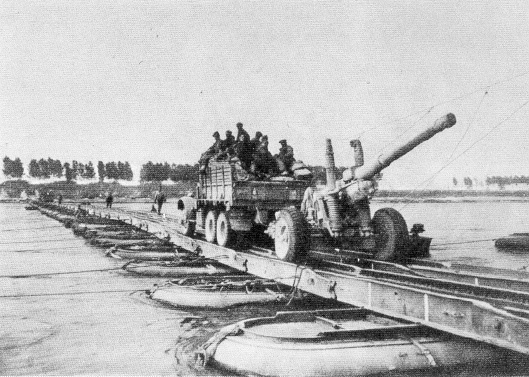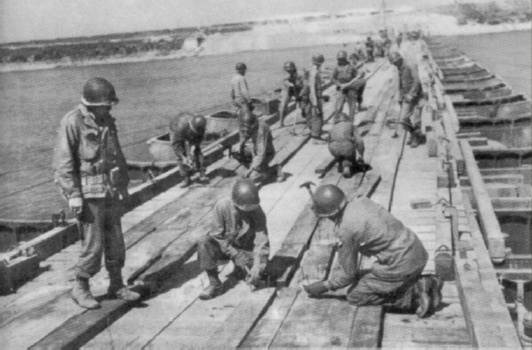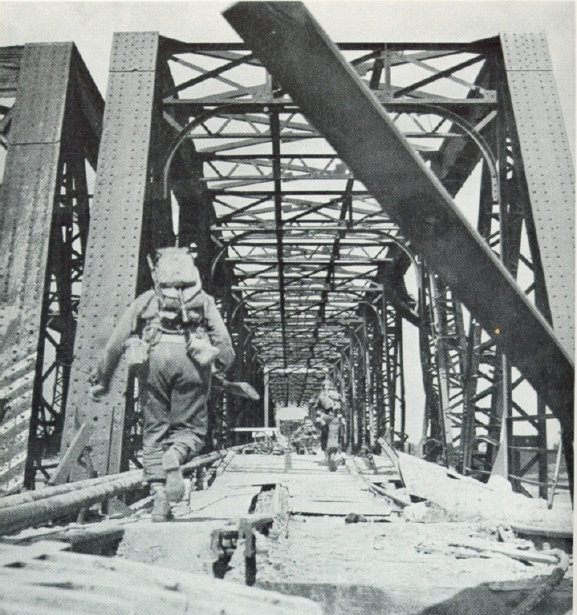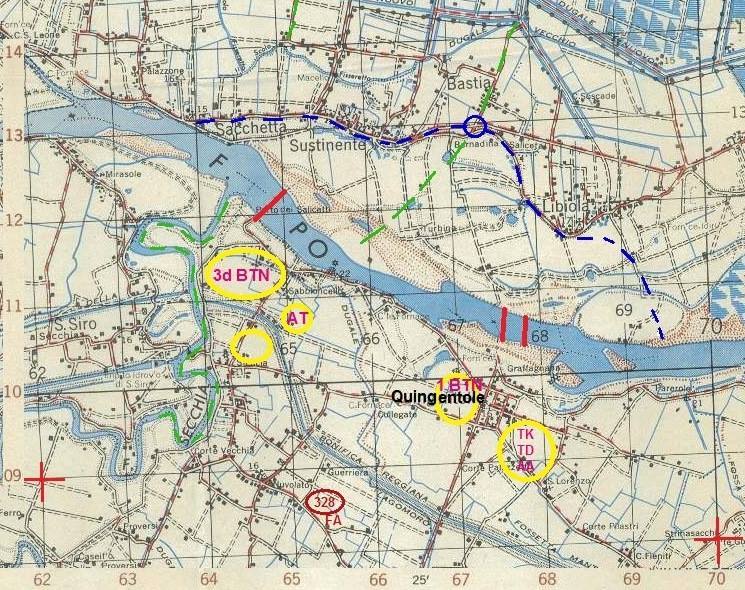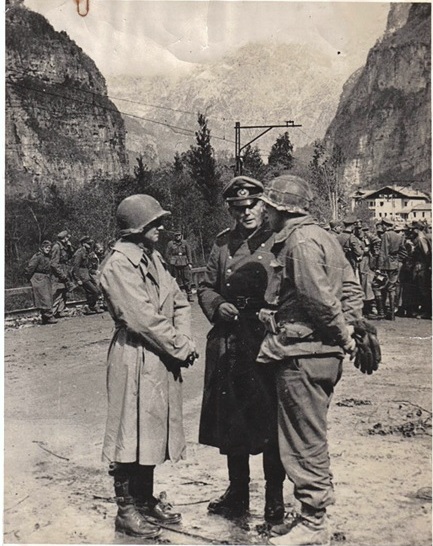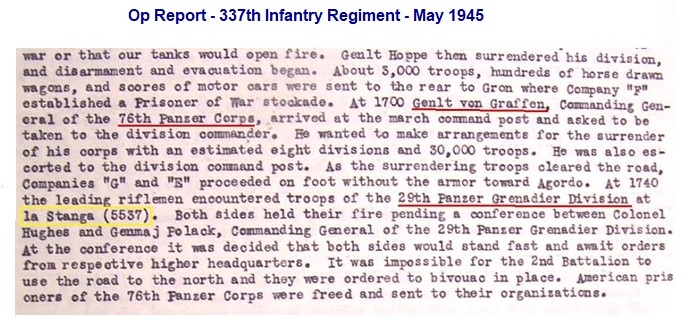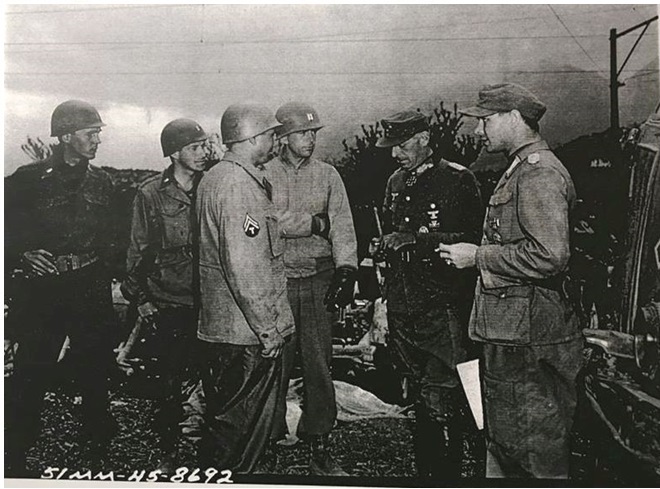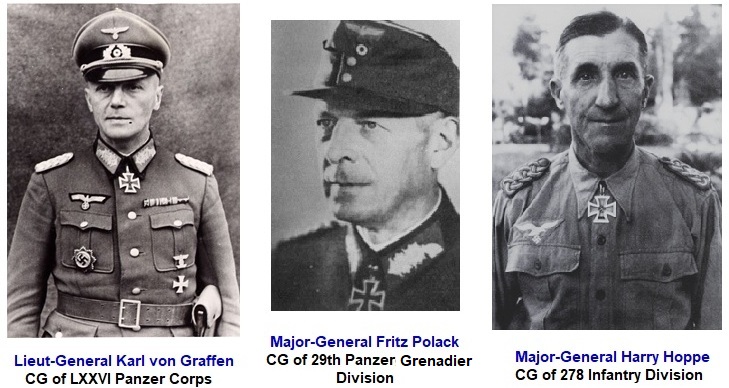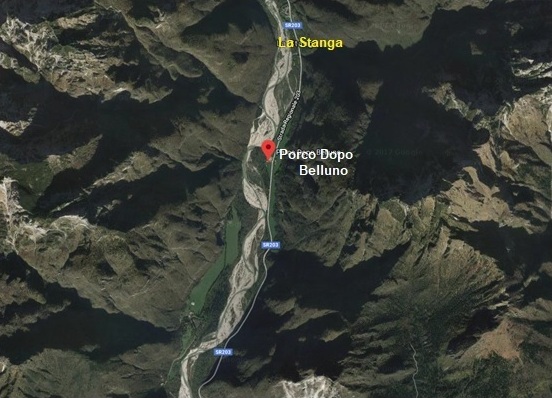Po Valley
April 21 - 25, 1945
The following account was prepared by reviewing several unit histories to create a fair and accurate sequence
of the events. The
reference maps were created from various sources and focuses primarily
on the actions of the 85th Infantry Division.
While the IV Corps
used the 1st Armored
Division to cover the western flank of the
advance across the floor of the Po Valley, it sent the 10th Mountain
Division on the left and the 85th Division on the right
generally
northward across the Panaro to the Po River. The enemy tried to
save
for the use of his own retreating forces two bridges across the Panaro
River northeast of Modena, at
the towns of Bomporto and Camposanto,
about six miles apart. The 10th Mountain Division seized the Bomporto bridge intact on 21 April,
using a mobile advance force
called Task
Force Duff. The main body reached the area south of the bridge
before
midnight and kept on across the river, heading for San Benedetto
di
Po, 24 miles farther north, which it occupied at 1800, 22 April.
The 85th Divison,
reinforced by small units of tanks and tank
destroyers and preceded by the 85th Recon Trop, had headed for
Camposanto. When the first elements arrived at the Camposanto
bridge
in the early morning of 22 April, and looked across to the town on the
northern bank, they found, as elements of the 6 South African Armored
Division had found the day before, that the bridge had not yet been
demolished but that the enemy was ready to defend it. Cpl.
Anthony J. Augustine of B Co., 310th
Engineer Battalion, 85th
Infantry Division swam across the river and cut the wires
by which it might have blown the bridge. However, the town was so
strongly held,
that the crossing could not be made before nightfall.
The 10th Mountain Division meanwhile let one mobile
battalion of the 85th
Division cross over the Bomporto bridge,
so that during the night of
22-23 April, units of both divisions were advancing northward toward
the Po. Next morning, the advance force of the 85th Division
reached
the Po River at Quingentole,
between the mouth of the Secchia River and
the
Po River bridge at Ostiglia farther
east.
The Po River was wide, with
sandy banks. Little was known about the
tactical situation on the northern bank, as the 10th Mountain Division
prepared to cross it in assault boas. The enemy remained quiet
until
the assault forces were concentrated, then fired heavily into the
assembly area. The 1st Battalion, 87th Mountain Infantry
Regiment, followed
by the remainder of the regiment, led the assault. On the
northern
bank, they built up a bridgehead during the afternoon of 23 April
despite artillery, mortar, and the rifle fire. The other two
regiments
crossed before morning, assisted by a battalion of amphibian trucks
(DUKWs).
IV
Corps engineers had a cable
ferry operating by the next afternoon,
and pushed the construction of pontoon and the treadway bridges for use
soon afterward. Here, then was the first Allied crossing in a
single
day of a barrier supposed to hold up all pursuit for several days, at
least. But it was only the first of many. At Quingentole,
in the IV
Corps zone, the 85th Division forced a second crossing a few hours
later, on 24 April.
II Corps struck northward to the
Po from the vicinity of Bologna on
21
April. The enemy was able to pull back from Eighth Army’s attack
on
the east before an encirclement northeast of Bologna could be
effected. Elements of II Corps were delayed by the determined
resistance of covering forces on the west flank of German Tenth Army,
but the 88th Division, farthest west, found the enemy in its path more
disorganized. This division made a speedier advance to the
Panaro, and
crossed it on a small, partly demolished bridge east of Camposanto (at
the same time that the 85th Division was crossing via the Camposanto
bridge), and in rubber assault boats and other improvised ferrying
facilities. On 23 April, as Fifth Army shifted the boundary
between II
and IV Corps somewhat to the west, the 88th Division on the western
flank of II Corps seized control of Hiway 12 and the Revere-Ostiglia
crossing.
The 88th Division’s advance to
reach the Po on 23 April had been
swift. Its elements next fanned out along the south bank to round
up
enemy stragglers. The Germans were trying to assemble their many
disorganized units in this area for escape to the far side of the Po,
so that the 88th Division in 48 hours collected hordes of prisoners,
estimated to total 11,000. The same story was true of the 91st
Division farther east. By nightfall, 24 April, 60 miles of the
southern bank of the Po was held by II and IV Corps, while considerable
forces had already crossed. The enemy south of it had surrendered
so
many men and abandoned such quantities of equipment, that, along with
what had been destroyed, any prolonged and effective resistance north
of the Po seemed no longer possible.
Not all the enemy south of
the Po had been rounded up, but those that
remained were often in disorganized small units of groups of stragglers
whom Italian partisans flushed from hiding and turned over to Allied
troops. Some die-hard elements had to be subdued, but many of the
enemy were ready to quit. Those Germans who got across the Po
were
intent on reaching the routes of escape from Italy into German-held
territory. The operations, which ensued from 24 Aril to 2 May,
therefore, was largely a contest in mobility, a race to the exits, and
then a large-scale mopping up.
~ ~ ~ ~ ~ ~
End ~ ~ ~ ~ ~ ~
Bridge over
the PANARO River near BOMPORTO.
By
1600 on 21 April, a task force secured this bridge before the German
could set the demolition charges.
|



